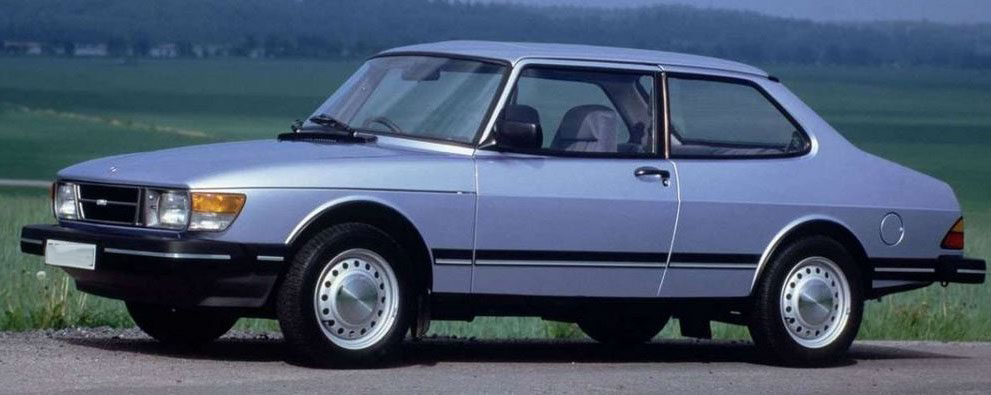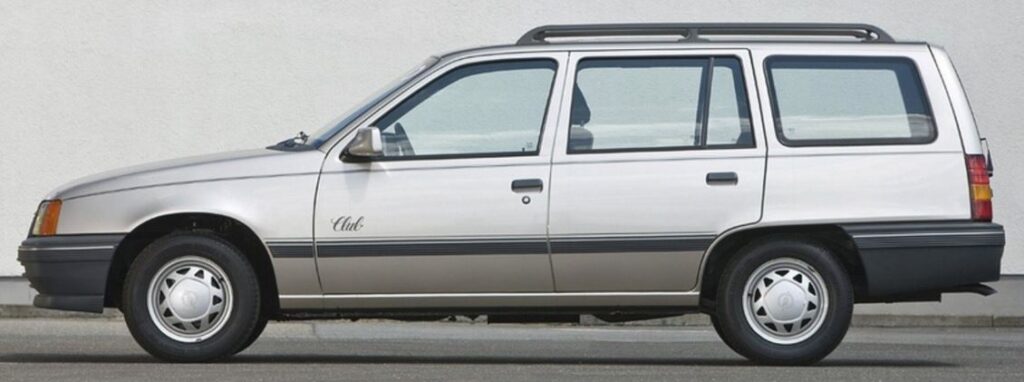Back in Ye Olde Days in the Racist Republic, the top tax rate was 48%, and with a National Sales Tax of 14% (on everything including food), you didn’t get much of your paycheck left for any of the pleasures and indulgences of life.
So what employers did was offer most employees a company car — which wasn’t taxed — as part of their total compensation along with a “fleet” credit card to cover all fuel and maintenance costs, and let me tell you, it was brilliant. (Do the math for yourselves, adding up the car payment, insurance, running costs and depreciation, and see what you end up with. The number will stagger you.)
Now not everyone qualified for such largess, of course, but if your job involved activities like calling on clients, fetching office supplies each month or visiting field offices, you qualified. Senior management, of course, also got cars because of the “prestige” of their jobs (even though they were the ones who could well afford not to have one, the bastards, but that’s corporate inequity for you).
Anyway, the company was usually very strict about who drove the cars — you couldn’t let your wife drive it to get groceries, for example — because in most cases the insurance only covered the actual employee. So if the car was involved in a wreck and you weren’t the driver, say hello to massive damages and (probably) termination.
As for the cars themselves, the model you got was very dependent on your place in the hierarchy of the company, and most companies simply gave you the car that your predecessor had driven, or if it was too old (usually around 2 years or 50,000 miles or so), you could get a new one from an approved list.
Well, my company car was once in the shop for some rather major repairs that would take at least a week to be done, and so I approached my boss and asked what the company was going to do about it. He called up the company accountant, and was told that one of the other guys at my level in the company would be away on leave for a couple of weeks, so I should just get the keys from him and use his car in his absence.
I must confess to feeling somewhat apprehensive about this, because said vacationer was a slob of the first order — his office looked like he hosted daily food fights and small animal sacrifices — so I got his keys and walked down to the underground parking garage, prepared to run screaming.
However, to my amazement, not only was Fred’s Saab clean, but it was spotless, looking brand new. (I should have known; included in approved “maintenance” was a six-monthly full detailing of the interior, and he must have just done it the day before he left.)
But that wasn’t all. Among the VW Golfs, Passats and Mitsubishis in that group of approved cars, he’d somehow managed to wangle himself one of these:

Yup; it was a Saab 900 Turbo, the one that came out with a “remodel” in 1984.
Bloody hell, the thing was a rocket (and especially so when compared to my staid Opel Kadett a.k.a. Chev Cavalier stationwagon, with its anemic 1500cc un-turbo’d engine).

The Saab was also a sharp-looking silver (as in the pic), whereas my Opel was… bamboo-yellow. (Hey, it was the only one available at the time and remember, it was FREE.)
Anyway, I drove that Saab for nearly two weeks, and boy did I love it. What amazed me was its roadholding, which was better than any car I had driven before, and only bettered by my next company car (promotion!), a BMW 325i.
I don’t know how well the 900 Turbo fared in the U.S., sales-wise, but I’m told that it didn’t do well. A pity: it should have blown all American cars of similar type off the roads. The only problem, as I see it, was that we Murkins loves us our big-ass engines, and even with a turbo, the Saab’s little 2-liter fourbanger probably did not have the allure of the typical mega-liter V8s from Chrysler, Chevy or Ford.
Me, with my fondness for small, peppy engines? I loved that Saab with a passion, and only getting the promotion to Beemer-level prevented me from nagging the boss for one.
I have since learned that while the Saab wasn’t that popular in the U.S. market as a whole, its actual user base was almost fanatical in their devotion to it.
Can’t say I blame ’em; for two weeks I was one of them. Hell, I’d take a new one now, if I could.

Many of the auto manufacturers are getting rid of V6 and V8 engines in many models and offering turbocharged engines.
Toyota Tacoma, Highlander and 4Runner no longer offer V6 engines. They are offered with a 2.4 liter turbo 4 cylinder.
The Toyota Tundra is no longer a V8 engine powered truck. It is offered with a Twin Turbo 3.4 liter V6.
Subaru offers models with base models that are naturally aspirated and also upper model trims in the same vehicle models that are turbocharged.
Time will tell if these engines hold up in the long term.
The three Tacomas I have had were all V6 engines. If they discontinue that then this might be the last Tacoma I ever buy unless a 4 banger can give me what I want for towing and such
I owned and drove a SAAB 9000 for several years in the late 80’s. and yes. the brand had a fanatical following, mostly because they were always very weird cars. So they were a favorite of the usual wierd crowd. But then what can you expect from a car made in Trollhatten Sweden. The early cars were 2 cycle 3 cylinder Front wheel drive. Everything about them was ” wrong “. Even the Ignition switch was in the wrong place, between the front seats next to the shifter. They were however fantastic Rally cars and popular here in New England with skiers since they were great in the snow.
Those early Turbos were a source of problems for the Brand because people didn’t understand how to treat them. There was an epidemic of Turbo Failures. People would shut them off after drives where they had been driving on the “Boost” for extended periods. The very hot Turbos would then Heat soak without any cooling oil circulating through the Turb Bearings. This would cook the oil causing it to turn to soilds and destroy the turbo Bearings overtime. Just learning to stay out of the Boost for the last 10 minutes of your trip would cure the problem.
My first turbo vehicle was a 2018 Ford Transit; the big van that rips off Mercedes’ Sprinters. In fact, it was twin turbo, something I’d only heard of in the aftermarket upgrades that Callaway did for Corvettes back in the 90s. You wouldn’t expect a big, lumbering cargo van with only 6 cylinders to be nimble and peppy, but she’d give you a touch of whiplash off the line. And at highway speeds, just thinking about it would give you another 5 MPH.
I had a software engineer the had a early 80’s Saab 900 Turbo. She loved it. in the late 90’s she traded it for a new Saab. That one was a problem car. It was traded for a Volvo.
The 900 Turbo wasn’t a huge seller here, but it got great reviews in the enthusiast press and had a very loyal following. I always wanted one, but the closest I ever came was a ’75 99LE, a non-turbo, non-hatch, non-manual, four-door with automatic transmission. I still loved it – when it ran.
My dad had a couple of Saabs in the mid 1970s. They were nice to drive. I remember helping him fix a hydraulic clutch on at least one of them. I never knew anyone with a Saab who didn’t have a repair or maintenance sob story to go with it. Perhaps the reason they never sold well in the US was because of the maintenance problems. As a company car with free fuel and maintenance they might have made sense, but most Americans either do our own maintenance or at least pay out of out own pockets.